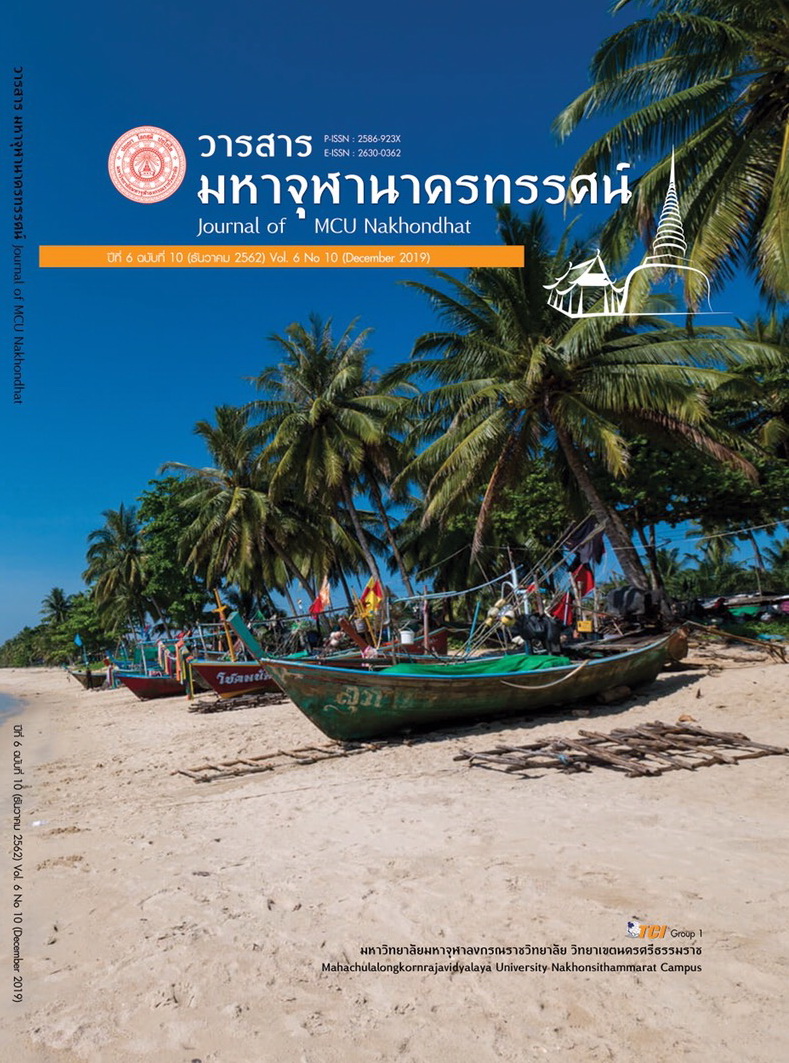GOVERNMENT COOPERATION AND DEVELOPMENT OF STRATEGIES TO PREVENT AND SUPPRESS HUMAN TRAFFICKING
Main Article Content
Abstract
The purpose of this research is to study the management of strategies to prevent and suppress human trafficking on government cooperation and the development of strategies to prevent and suppress human trafficking, to study the performance based on government cooperation policies and strategic development for preventing and suppressing human trafficking, and to study the prevention and suppression of human trafficking in government cooperation based on the strategic development for preventing and suppressing human trafficking. It is a qualitative research, which has studied about government cooperation and the adoption of strategies to prevent and suppress human trafficking by collecting data from in-depth interview, focus group, and documentary research, as well as by collecting information from key informants, and purposive sampling. The group of key informants in this research consists of 3 groups, namely, the senior managers, the middle managers and the stake holders. 7 members of each group were selected as the participants.
The results revealed that:
There were the determination of measures and mechanism involved with propulsion cooperation policy, and the determination of measures and effective data management so that the victims can receive help and protection according to the measures. Besides, there were the development of cooperation-policy mechanism, the promotion of mechanisms at all levels, the cooperation at the local level, the promotion of the role of the center for the prevention and suppression of human trafficking at provincial level, and the potential development of the committee of promoting network cooperation both at home and abroad. Additionally, there must be the measures for safety and protection in order to prevent the criminals who use direct and indirect influences to intimidate the victims or to induce or force the victims to return to the human trafficking cycle based on the witness protection act 2003
Article Details
References
ชุติมา สมประสงค์. (2547). แนวทางการพัฒนาการประสานงานระหว่างองค์กรเพื่อช่วยเหลือหญิงและเด็กที่ตกเป็นเหยื่อการค้ามนุษย์. ใน วิทยานิพนธ์สังคมสงเคราะห์ศาสตรมหาบัณฑิต สาขาการบริหารและนโยบายสวัสดิการสังคม. มหาวิทยาลัยธรรมศาสตร์.
ณัฐยา วิริวิทยา. (2553). ปัญหาอุปสรรคของเจ้าพนักงานตำรวจต่อการป้องกันปราบปรามการค้ามนุษย์: ศึกษาเฉพาะกรณีพื้นที่กรุงเทพมหานคร. ใน วิทยานิพนธ์ศิลปะศาสตร มหาบัณฑิต สาขาการบริหารงานยุติธรรม. มหาวิทยาลัยธรรมศาสตร์.
ราชกิจจานุเบกษา. (2560). พระราชบัญญัติป้องกันและปราบปรามการค้ามนุษย์ (ฉบับที่ 3) พ.ศ. 2560 เล่มที่ 134 ตอนที่ 12 ก (27 มกราคม 2560). กรุงเทพมหานคร: กระทรวงการพัฒนาสังคมและความมั่นคงของมนุษย์.
วิลาวัลย์ ลิมปนะวรรณะกุล. (2547). กระบวนการเข้าสู่การตกเป็นเหยื่อการค้ามนุษย์ของหญิงและเด็ก: ศึกษาเฉพาะกรณีบ้านเกร็ดตระการ. ใน วิทยานิพนธ์สังคมสงเคราะห์ ศาสตรมหาบัณฑิต สาขาการบริหารและนโยบายสวัสดิการสังคม. มหาวิทยาลัยธรรมศาสตร์.
สำนักงานคดีค้ามนุษย์ สำนักงานอัยการสูงสุด. (2562). แผนยุทธศาสตร์และแผนปฏิบัติการ สำนักงานคดีค้ามนุษย์ สำนักงานอัยการสูงสุด ประจำปี พ.ศ.2564-2568. กรุงเทพมหานคร: สำนักงานอัยการสูงสุด.

